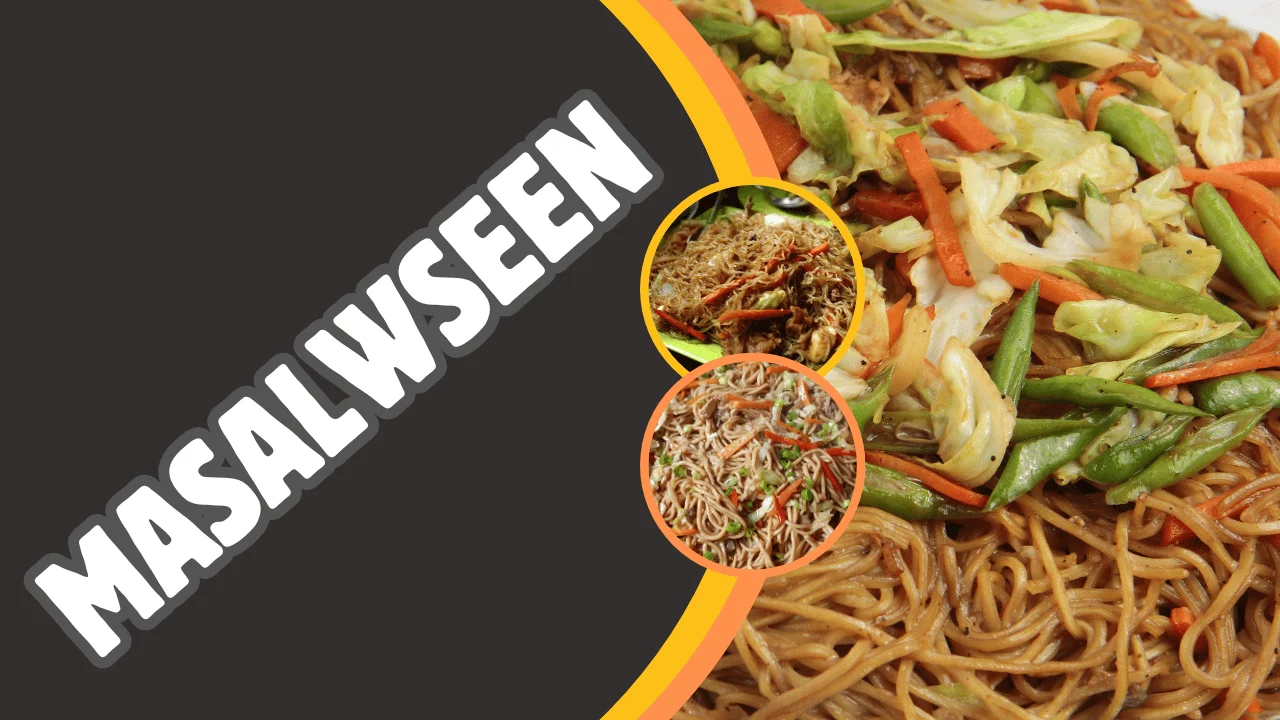Introduction
Masalwseen is a traditional Middle Eastern dish that embodies the region’s rich culinary heritage. Often referred to by different names such as Mesfouf or Maqlouba depending on the locality, this dish is celebrated for its harmonious blend of flavors and aromatic spices. The name “Masalwseen” itself suggests a mix of mystery and exotic flavors, indicative of the diverse ingredients and intricate preparation methods involved.
What is Masalwseen?
Masalwseen is a culinary masterpiece rooted in the traditions of Middle Eastern cuisine. At its core, it consists of layered ingredients, typically including rice, meat (such as chicken, lamb, or beef), vegetables, and a robust blend of spices like cinnamon, cumin, turmeric, and paprika. The preparation of Masalwseen is an art form that requires careful marination of the meat, parboiling of the rice, and slow cooking to ensure the flavors meld beautifully. The dish is traditionally served by inverting the pot onto a serving platter, revealing the meticulously layered composition that is both visually striking and delicious.
Masalwseen’s Rich History
The origins of Masalwseen can be traced back to ancient times, where it was a staple in the diets of Middle Eastern communities. This dish was not only a source of nourishment but also a symbol of hospitality and togetherness. It was often prepared during special occasions and festive gatherings, reflecting the communal spirit of Middle Eastern culture.
The Ingredients of Masalwseen
The core ingredients of Masalwseen include rice, meat, and a variety of vegetables. These are complemented by a blend of spices that give the dish its distinctive flavor. Each ingredient is carefully selected and prepared to ensure a harmonious balance of taste and texture.
Spices and Their Significance
Spices play a crucial role in Masalwseen, with cinnamon, cumin, turmeric, and paprika being the most commonly used. These spices not only enhance the flavor of the dish but also offer numerous health benefits. For instance, turmeric has anti-inflammatory properties, while cumin aids digestion.
Cultural Significance of Masalwseen
Masalwseen holds a special place in Middle Eastern culture. It is often associated with community gatherings and festive occasions, symbolizing hospitality and the shared enjoyment of food. The dish’s preparation and consumption are seen as acts that bring people together, reflecting the Middle Eastern values of conviviality and tradition.
Modern Adaptations of Masalwseen
In modern culinary practices, Masalwseen has transcended its regional origins, gaining popularity in kitchens worldwide. Its versatile nature allows it to be adapted to various dietary preferences, including vegetarian and vegan versions that substitute meat with ingredients like tofu or chickpeas.
How to Make Masalwseen
Creating Masalwseen is a labor of love that requires patience and precision. The following sections provide a step-by-step guide to preparing this traditional dish.
Preparing the Ingredients
The first step in making Masalwseen is to prepare the ingredients. This involves marinating the meat, parboiling the rice, and chopping the vegetables. Each component must be prepared separately to ensure that they cook evenly and maintain their individual flavors.
Marinating the Meat
Marination is a crucial step in the preparation of Masalwseen. The meat is typically marinated in a mixture of yogurt, garlic, and spices for several hours or overnight. This not only tenderizes the meat but also infuses it with flavor.
Cooking the Rice
The rice used in Masalwseen is usually parboiled before being layered with the other ingredients. This ensures that the rice is partially cooked and will finish cooking during the final steaming process. Parboiling also helps to remove excess starch, resulting in fluffy, separate grains.
Layering the Ingredients
Once all the ingredients are prepared, they are layered in a large pot. The meat forms the bottom layer, followed by the vegetables, and finally the rice. Each layer is seasoned with additional spices to enhance the overall flavor of the dish.
The Cooking Process
The pot is then covered and placed on low heat, allowing the ingredients to steam and meld together. This slow cooking process ensures that the flavors are evenly distributed and the dish is cooked to perfection. The final step involves inverting the pot onto a serving platter, revealing the beautifully layered Masalwseen.
Masalwseen Variations
Masalwseen is a versatile dish that can be adapted to suit different tastes and dietary preferences. The following sections explore some popular variations of this traditional Middle Eastern dish.
Masalwseen with Chicken
One of the most common variations of Masalwseen is made with chicken. The chicken is marinated in a blend of yogurt and spices before being layered with rice and vegetables. This version is lighter than those made with red meat and is often preferred for its delicate flavor.
Masalwseen with Lamb
Lamb is another popular choice for Masalwseen. The rich, robust flavor of lamb pairs beautifully with the aromatic spices used in the dish. This version is often reserved for special occasions and festive gatherings.
Masalwseen with Beef
For those who prefer beef, Masalwseen can be made using tender cuts of beef. The beef is marinated and cooked until it is melt-in-the-mouth tender, adding a hearty element to the dish.
Vegetarian Masalwseen
Vegetarian Masalwseen is a delicious alternative for those who do not eat meat. The meat is replaced with ingredients like tofu, chickpeas, or a variety of vegetables. This version is equally flavorful and satisfying, making it a popular choice for vegetarians and vegans.
Vegan Masalwseen
For a completely plant-based version, vegan Masalwseen uses substitutes like tofu or tempeh along with a variety of vegetables. The spices and cooking method remain the same, ensuring that the dish retains its traditional flavor and appeal.
Health Benefits of Masalwseen
Masalwseen is not only delicious but also offers numerous health benefits. The following sections highlight some of the nutritional advantages of this traditional Middle Eastern dish.
Nutritional Value of Masalwseen
Masalwseen is a balanced meal that provides a good mix of carbohydrates, protein, and vegetables. The rice offers a source of energy, while the meat or vegetarian substitutes provide essential proteins. The vegetables add fiber, vitamins, and minerals to the dish.
Health Benefits of Spices
The spices used in Masalwseen, such as turmeric, cumin, and cinnamon, have various health benefits. Turmeric is known for its anti-inflammatory properties, cumin aids digestion, and cinnamon helps regulate blood sugar levels.
Low-Calorie Options
For those looking to reduce their calorie intake, Masalwseen can be made using lean meats or vegetarian substitutes. Additionally, using less oil and incorporating more vegetables can help lower the calorie content of the dish.
Gluten-Free Option
Masalwseen can be easily adapted to a gluten-free diet by ensuring that all the ingredients used are gluten-free. Rice is naturally gluten-free, and any meat or vegetable substitutes can be chosen accordingly.
Heart-Healthy Ingredients
The use of heart-healthy ingredients like olive oil and lean meats can make Masalwseen a good choice for those looking to maintain a healthy heart. Olive oil is rich in monounsaturated fats, which are beneficial for heart health.
Serving Masalwseen
Masalwseen is traditionally served by inverting the pot onto a serving platter, revealing the beautifully layered dish. The following sections provide tips on how to serve Masalwseen and enhance its presentation.
Traditional Presentation
The traditional way to serve Masalwseen is to invert the pot onto a large serving platter. This reveals the layers of meat, vegetables, and rice, creating a visually striking presentation. The dish is often garnished with fresh herbs, nuts, or pomegranate seeds to add color and texture.
Accompaniments
Masalwseen is often served with a variety of side dishes and accompaniments. Common choices include yogurt, salads, and pickles, which complement the flavors of the main dish and add a refreshing contrast.
Pairing with Beverages
To enhance the dining experience, Masalwseen can be paired with traditional Middle Eastern beverages. Mint tea, pomegranate juice, or a refreshing yogurt drink known as ayran are popular choices that complement the flavors of the dish.
Serving for Festive Occasions
Masalwseen is often prepared for festive occasions and family gatherings. To make the meal more special, the dish can be served on decorative platters and accompanied by an array of Middle Eastern appetizers and desserts.
Storage and Reheating
Leftover Masalwseen can be stored in the refrigerator for a few days. When reheating, it is important to do so gently to avoid drying out the rice. The dish can be reheated in the oven or on the stovetop, adding a splash of water or broth to keep it moist.
Cultural Significance of Masalwseen
Masalwseen holds a special place in Middle Eastern culture. The following sections explore the cultural significance of this traditional dish and its role in bringing people together.
Also Read: Picking the Best Berries to Eat for Health Benefits
Symbol of Hospitality
In Middle Eastern culture, Masalwseen is often seen as a symbol of hospitality. Preparing and sharing this dish with guests is a way of showing generosity and welcoming them into one’s home. The elaborate preparation process reflects the host’s care and effort to provide a memorable meal.
Community Gatherings
Masalwseen is commonly prepared for community gatherings and family celebrations. The dish’s communal nature encourages people to come together and share a meal, fostering a sense of unity and togetherness

